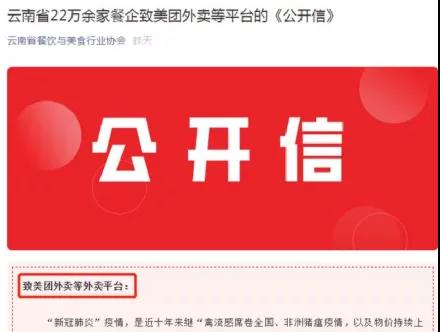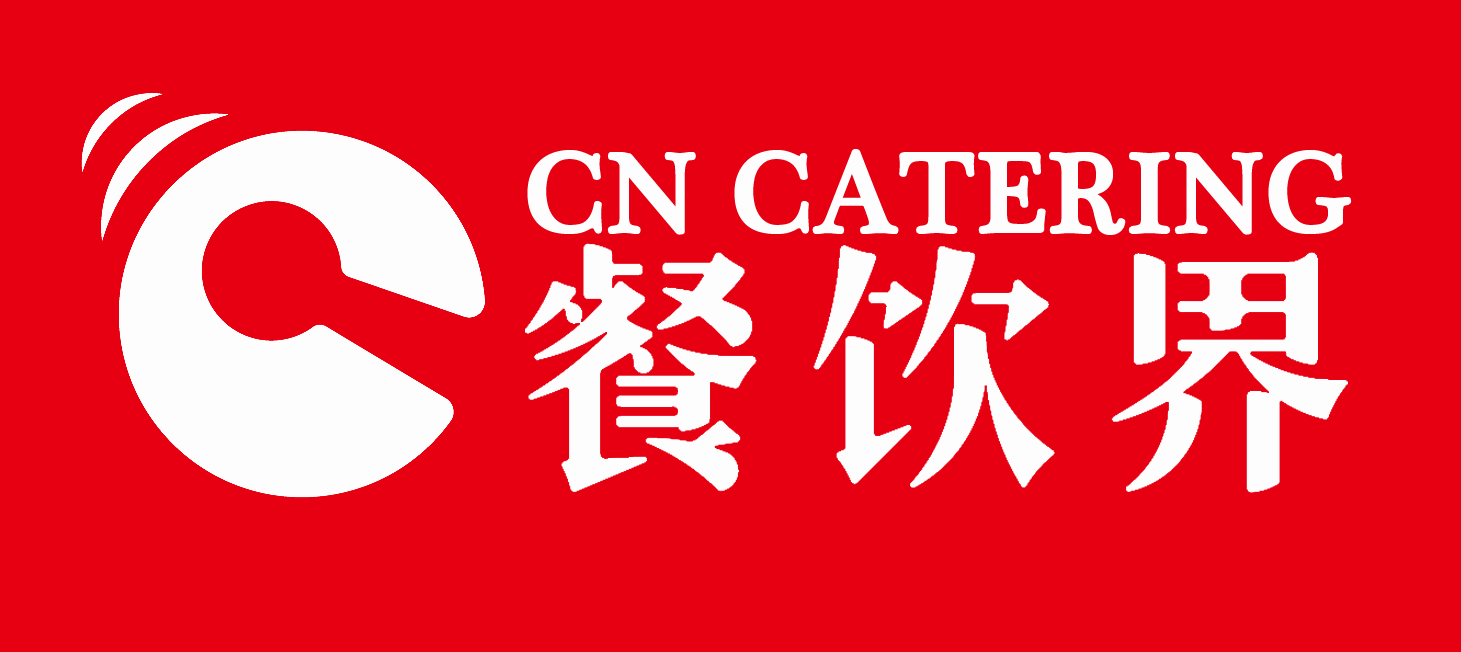That little shop on the corner was beaten by a commission? The gameplay of the platform should have Today's headlines

Suddenly I found that the store that often ordered takeaways was closed.
This is a small shop with a good reputation, and the Meituan score has been maintained above 4.8. The main food is fast food, which is more than 30 square meters. There are 8 tables in the store. In the past, the ratio of dine-in to take-out was about 3:7. Recalling carefully, it is not without warning. The shopkeeper's inadvertent complaint that "doing a dine-in restaurant is too small, and making takeout does not make money" may be the reason.
In the end, it failed to survive the "7-year itch". The 7-year ups and downs of the small store, alive and well is a microcosm of the development of food and beverage delivery; behind the microcosm, there is a key third-party factor-the food delivery platform.
ONE
Crazy subsidies: fewer orders
But make money and quickly develop a reputation
The store opened around 2014. At this time, the label of the food delivery platform is to burn money, and the media people often form the platform to burn money "frenzy." According to media reports, around 2015, Meituan’s monthly subsidy was as high as 200 million yuan. Under crazy subsidies, in 2015, the number of takeaway users exceeded 200 million; in 2016 and 2017, the number of takeaway users increased to 260 million and 310 million, respectively. The user’s takeaway habit lies in the “eating hamburger for 1 cent”. Was quickly developed under the temptation.
Platform dividends, coupled with a lower threshold for food delivery operations, a large number of entrepreneurs flocked to the market during this period, and a batch of pure food delivery brands also flooded in. Some chain takeaway brands represented by Stupid Bear Cooking and Jinghao Night Suppers are also emerging at this time. Most of these brands "red" during the crazy subsidy period of the platform, and "died" during the subsidy subsidy period. The meager profit, the difficulty of user precipitation, and the takeaway model have made these takeaway brands that rely on platform subsidies to survive quickly ushered in the big demise.
Relatively speaking, "din-in + takeaway" coexisted, and at the same time, some merchants who paid attention to the quality of takeaway survived. Compared with pure takeaway merchants, these restaurants have obvious advantages. First, there are stores that can serve as a scene to accumulate users and focus on outputting the image of the restaurant; second, in the era of barbaric growth of takeaway, high-quality restaurants can easily obtain product competition barriers.
Therefore, around 2015, although this small store did not have too many takeaway orders, each order actually "made money" and used this time to quickly accumulate word of mouth and users. During this period, the brand of this small store had many branches in surrounding areas and low-tier counties, and their performance was good.
TWO
Subsidies are declining:
User development and steady development
Starting around 2017, some consumers have clearly felt that "takeaways are getting more and more expensive", and merchants have also felt that "money is getting harder and harder". Because, during this period, the subsidy of the platform began to decline, and the commission system of the platform began to go on the right track. Especially from 2018 to 2019, the crazy subsidy era of major platforms officially ended, pure takeaway brands came to an end, and the first batch of brands that explored the “dining + takeaway” model achieved a smooth transition.
At this stage, the takeaway platform began to slowly withdraw the right to speak. When subsidies were removed and users did not want to lose, they began to frequently ask merchants to "give profits" and guide (supervise) (promote) merchants to do preferential activities. The most intuitive feeling for businesses is that the previously "friendly" platform has begun to feel oppressive. A catering owner bluntly stated that only by passively following the platform can there be food.
In this context, this fast-food restaurant also changed its previous simple and rude promotional methods and replaced it with a brand-new discount package. Too many merchants really started to operate the takeaway at this stage, and they worked hard on the package, packaging, and even the language of the takeaway products to continue to maintain the profitability of the takeaway.
THREE
Commission increase:
The cost of acquiring customers is rising, relying on old customers to "hang"
From 2015 to the present, what changes have the takeaway businesses experienced on the platform? It is the change from "up to 50%-80% platform subsidy to 15%-26% commission"!

After the resumption of work due to the epidemic in 2020, food delivery platforms ushered in a wave of "collective boycotts" across the country. The fundamental reason is that merchants hope to reduce their commissions by about 20% during special periods. The Yunnan Provincial Food and Beverage Industry Association wrote an "Open Letter" on behalf of more than 220,000 businesses in Yunnan, hoping that the platform will adjust the commission ratio. The result is no longer necessary.
On the one hand, commissions continue to rise. On the other hand, under the background of the information explosion, the cost of acquiring customers from public domain platforms is also getting higher and higher. Takeaways have begun to become a pity for some merchants to abandon and tasteless. This phenomenon is more obvious among small and medium-sized merchants. These merchants lack certain bargaining power in the face of platforms, supply chains, and properties, resulting in high costs. In the face of a 20% commission, there is little profit left. Therefore, in the past two years, while many chain brands have explored the food delivery sector, some small and medium businesses have quietly exited the food delivery platform.
There is also a considerable number of merchants. In the case of weak marketing, the revenue of food delivery is "hanged" by regular customers, revenue growth is slow, and profit growth has stagnated or even declined.
This small store closed just in time for the commission adjustment node of Meituan, which was destined to attract attention. Starting in May, Meituan began to implement new commission rules. Two new terms have been added to the new rules, "technical service fee" and "performance service fee". Technical service fee is the fee that merchants need to pay for using Meituan's platform and technology. The platform charges a fixed percentage, and the national ratio is 6%. about. The larger change in deposits is the "performance service fee". There are three factors that affect the fee: distance, price, and time. Based on these three factors, Meituan implements the "metered pricing" rule, that is, the farther the delivery distance, the higher the price, and the later the time period, the higher the charge.
FOUR
Commission adjustment:
Under "Anger", reflect on how to go further
After the new commission regulation was launched, the fixed charge has become a variable charge. Since its implementation, many businesses are still "confused", and it has become the norm to not know how much money they can earn after receiving the order. From the shallow calculation of the rules, the new regulations are good for small and medium businesses that mainly focus on short-distance business. However, more merchants reported that the new regulations are not only complicated to calculate, but the final result may not decrease but increase relative to the original commission. In this regard, many businesses said helplessly: they may have been cut by the platform again.

Generation of performance service fees posted by merchants
In particular, small and medium-sized businesses have a lack of private domain traffic, and they are not even capable of cooperating with third-party logistics. They can only rely on the platform to support takeaway revenue and fall into the situation of "I am a fish and a man is a knife". In fact, the fall of pure takeaway businesses has already sounded a wake-up call for businesses. Under the new rules, the elimination of disadvantaged businesses will be further accelerated. The takeaway merchants will eventually upgrade from the initial flurry of demons to the elite wars. In this context, it is imperative to weaken the constraints of the platform and polish a takeaway model that suits you.
1. Adjust the ratio of dine-in and take-out
The era of pure food delivery for small and medium businesses is over, and large-scale food delivery brands that rely on capital and strength still have room for survival. Then, businesses that used to mainly make takeaway revenue can rethink the proportion of takeaway. If the main focus is on takeaway, the dine-in experience is not done well, and the net profit of takeaway is too low, it is not worth the loss. Using the dine-in business image and the take-out to increase traffic is the correct posture for the business to "dine-in + take-out".
2. Establish "own" order channels
There are many merchants around who have pulled users on the platform into their own communities, and have quietly transferred a large part of their take-out orders to the "own" ordering channels. For small and medium businesses, when the private domain traffic is not enough, their own channels such as small programs and their own apps are not applicable, but they return to the "stupid way" of takeaways, solicit customers, deliver them by themselves, and receive good ones. Effect. When the private domain traffic reaches a certain scale, starting from a small program, trying to operate from a single platform is also a major entrance for merchants to get rid of the commission trouble.
3. Break and re-establish according to the new policy
Merchant fees incurred under the new commission policy have decreased and increased. What the merchant has to do is to reset the take-out authority according to the new commission policy, such as delivery distance, delivery party selection, product price, etc., break the original model and recalculate the cost, and finally choose the settings that are beneficial to them.
The high commission problem is still an unsolvable problem. External platforms need to develop, riders need to make ends meet, merchants need to earn money, and consumers need to benefit. This in itself is a contradictory but tightly connected closed loop. Only when the Quartet continuously seeks new breakthroughs and adapts to new rules can the overall development of food delivery be promoted.
As a merchant, it is more necessary to break the inherent cognition of the "vulnerable group", choose to take the initiative, polish the take-out model in the new environment, and find a new balance between profit and cost, which is far more than "resisting" the platform. Be practical.
免责声明:1.餐饮界遵循行业规范,转载的稿件都会明确标注作者和来源;2.餐饮界的原创文章,请转载时务必注明文章作者和"来源:餐饮界www.canyinj.com",不尊重原创的行为餐饮界或将追究责任;3.投稿请加小编微信toutiaoxiansheng或QQ1499596415。4.餐饮界提供的资料部分来源网络,仅供用户免费查阅,但我们无法确保信息的完整性、即时性和有效性,若网站在使用过程中产生的侵权、延误、不准确、错误和遗漏等问题,请及时联系处理,我们不承担任何责任。
 扫码关注餐饮界微信号
扫码关注餐饮界微信号


 Media
Media


